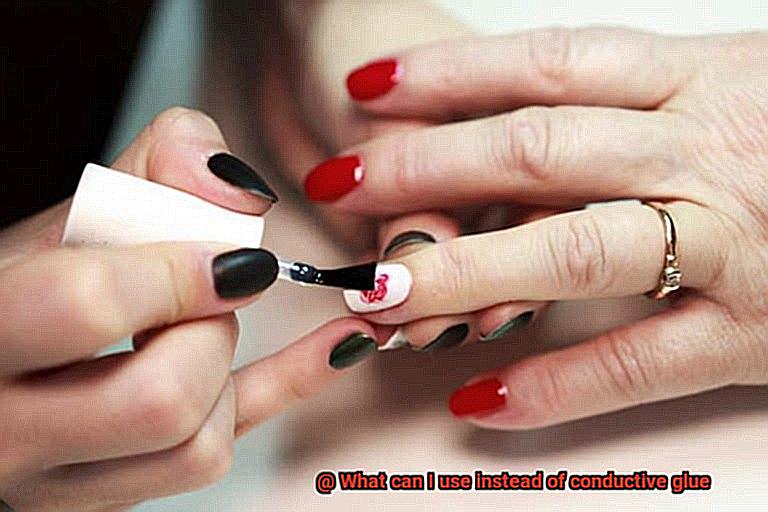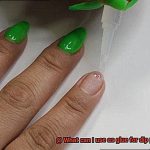Picture this: you’re in the midst of an exhilarating DIY electronics project, brimming with excitement, only to realize that your trusty conductive glue has run dry. It’s a frustrating moment that can swiftly extinguish your creative fire. But fret not, my fellow tech enthusiasts, for there exists a world of alternative solutions just waiting to be uncovered.
In this blog post, we’ll embark on a thrilling exploration of alternatives to conductive glue. Whether it’s due to unavailability or simply personal preference, sometimes we must venture beyond the confines of tradition and discover different options to achieve our goals. So, let’s ignite our imaginations as we delve into a plethora of innovative substitutes that are readily available and capable of bridging connections.
From everyday materials found around the house to specialized conductive tapes and adhesives designed with our projects in mind, we will shine a spotlight on various alternatives. So grab yourself a steaming cup of coffee, settle in comfortably, and join us on this captivating journey as we unveil ingenious solutions that surpass the boundaries of conventional conductive glue.
Without further ado, let us embark on this quest to find the perfect substitute tailored to your needs while ensuring seamless component connection in your projects. Bid farewell to conductive glue and wholeheartedly embrace these imaginative alternatives instead.
Advantages and Disadvantages of Conductive Glue
Contents
- 1 Advantages and Disadvantages of Conductive Glue
- 2 Alternatives to Conductive Glue
- 3 Conductive Epoxy: Properties and Applications
- 4 Conductive Tape: Properties and Applications
- 5 Soldering: Process, Equipment, and Benefits
- 6 Wire Bonding: Process, Materials, and Benefits
- 7 Mechanical Fasteners: Types, Uses, and Limitations
- 8 Considerations When Choosing an Alternative to Conductive Glue
- 9 Conclusion
When it comes to creating electrical connections in electronic devices and circuits, conductive glue has emerged as a versatile and user-friendly option. However, before deciding if it’s the right choice for your project, it is important to weigh the advantages and disadvantages of using conductive glue.
In this article, we will explore in detail the pros and cons of conductive glue, providing you with a comprehensive understanding of its benefits and limitations.
Advantages of Conductive Glue:
Easy Application:
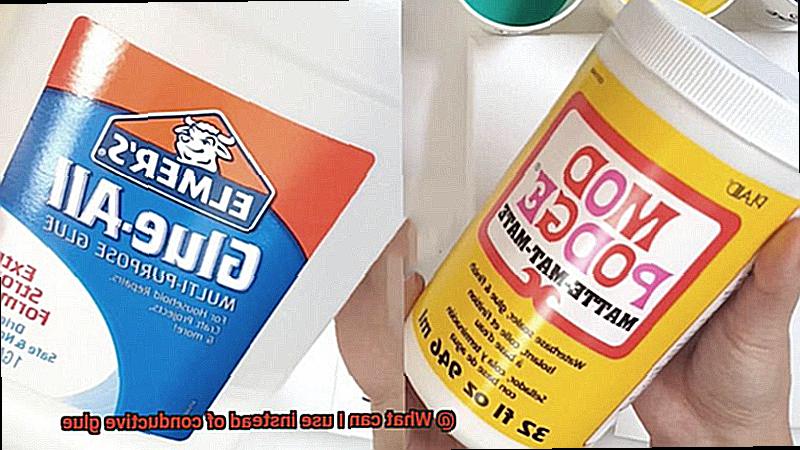
Conductive glue offers a user-friendly application process. Whether applied through a syringe or brush, precise placement is easily achievable. This makes it suitable for various applications, even in hard-to-reach areas where traditional soldering methods may be challenging.
Versatility:
One of the significant advantages of conductive glue is its compatibility with a wide range of materials. It can bond metals, plastics, ceramics, and glass, making it an ideal choice for bonding different components in electronic devices and circuits. This versatility eliminates the need for multiple adhesives and simplifies the assembly process.
Low Resistance:
Conductive glue provides exceptional electrical conductivity with low resistance. This ensures efficient current flow between connected components, making it particularly suitable for applications where conductivity is critical, such as in microelectronics or high-frequency circuits.
Flexibility:
Unlike soldering, which requires high temperatures that can damage delicate components, conductive glue can be used at room temperature. Its ability to bond sensitive materials without heat makes it a preferred choice in electronics assembly. It also allows for easier repair or rework, as components can be easily removed without risk of heat damage.
Disadvantages of Conductive Glue:
Limited Strength:
Compared to traditional soldering methods, conductive glue may not offer the same mechanical strength. It may not be suitable for applications where components are subjected to heavy stress or constant vibration. In such cases, alternative bonding methods like soldering or mechanical fasteners may be more appropriate.
Longer Curing Time:
Conductive glue typically requires sufficient time to cure and reach optimal bonding strength. This can extend the assembly process and delay production timelines in certain applications. It is essential to factor in the curing time when planning project schedules.
Higher Cost:
Conductive glue is generally more expensive than traditional soldering materials like solder wire or solder paste. The cost difference may be significant, especially in large-scale production environments where cost-efficiency is crucial. It is important to consider the overall budgetary constraints when deciding on the adhesive method.
Temperature Sensitivity:
While conductive glue is usable at lower temperatures, it can be sensitive to extreme temperature changes. In high-temperature environments, the adhesive properties of conductive glue may degrade over time, potentially compromising its effectiveness. Careful consideration must be given to the expected operating conditions of the electronic device or circuit.
Alternatives to Conductive Glue
If you find yourself in search of alternatives to the tried and true conductive glue, fear not. Today, we shall embark on a journey through the vast realm of bonding options for your electronic components, all while ensuring a seamless flow of electrical current. So let us delve into the advantages and limitations of each alternative, exploring a myriad of possibilities.
First and foremost, let us introduce the mighty conductive epoxy. This two-part adhesive system combines resin and hardener, forming an unyielding bond with exceptional electrical conductivity. Ideal for applications requiring robust connections, such as bonding wires or chips, conductive epoxy excels in both low-voltage and high-frequency scenarios. Yet, be aware that it demands a touch more patience during the curing process when compared to its counterparts.
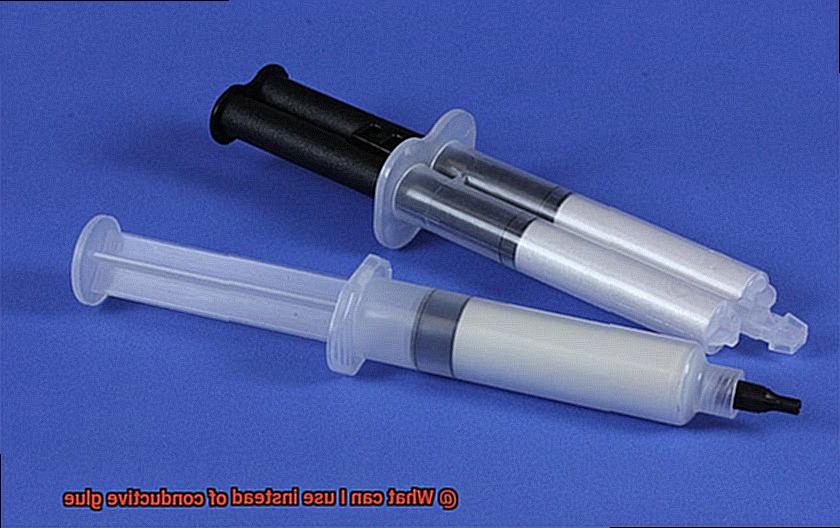
Next on our illustrious list is none other than conductive adhesive tape. This remarkable creation offers unparalleled ease of use – simply cut it into your desired shape and apply. With commendable adhesion and flexibility, conductive adhesive tape reigns supreme when it comes to irregular surfaces. However, tread cautiously and choose wisely, as different tapes may present limitations in terms of temperature resistance or adhesion strength.
Now, let us shift our attention to the captivating realm of conductive silver paste. This dense paste harbors minuscule silver particles that interweave to form a conductive path upon application. Its versatility shines through in its ability to bond wires or repair circuit traces with ease. Nevertheless, bear in mind that its curing process may require specific conditions such as elevated temperatures or exposure to UV light.
For those who appreciate a touch of tradition, consider the venerable art of soldering. By melting a metal alloy known as solder, one can forge permanent bonds between components. Soldering bestows both mechanical strength and electrical conductivity upon your creations, making it a cherished choice for electronic assembly and repair endeavors.
And last but certainly not least, let us explore the captivating realm of conductive ink. This liquid alternative boasts a mesmerizing concoction of conductive particles dispersed within a solvent. With various application methods at your disposal, including screen printing or inkjet printing, conductive ink offers unparalleled flexibility. It graciously adheres to a wide range of substrates, even those of a more pliable nature. Yet, it is worth noting that it may present limitations in terms of adhesion strength and conductivity when compared to its counterparts.
Conductive Epoxy: Properties and Applications
Conductive epoxy is a remarkable adhesive that possesses unique properties and finds numerous applications in the electronics industry. This adhesive serves as the ultimate glue for bonding electronic components together.
One of the standout features of conductive epoxy is its exceptional adhesion capabilities. It can bond to a wide range of materials such as metals, plastics, and ceramics, making it incredibly versatile for joining different components in electronic devices. Moreover, conductive epoxy forms a strong and durable bond that ensures the reliability of connections.
What sets conductive epoxy apart from other adhesives is its ability to conduct electricity. Tiny particles of silver or graphite within the adhesive create a pathway for electrical current to flow. This makes it an ideal choice for electronic applications where proper conductivity is essential for device functionality.
But that’s not all. Conductive epoxy also boasts excellent thermal conductivity. The conductive particles in the adhesive facilitate heat transfer, which is crucial for preventing overheating in electronic components. By keeping things cool and operating at optimal temperatures, conductive epoxy helps maintain device performance and longevity.
Using conductive epoxy is a breeze due to its various forms and application methods. It is available as paste or film, allowing users to choose the best option for their specific project needs. Whether it’s dispensing with syringes or applying with specialized tools, conductive epoxy simplifies assembly processes.
In terms of applications, conductive epoxy shines brightest in the electronics industry. It is commonly used to bond components on printed circuit boards (PCBs), ensuring reliable electrical connections between surface-mount devices (SMDs) and integrated circuits (ICs). This critical function guarantees the smooth operation of electronic devices.
Conductive epoxy also plays a pivotal role in flexible electronics. Its ability to bond flexible substrates makes it an ideal choice for flexible displays and sensors. This adhesive keeps electrical connections intact even when devices are bent or stretched, making it essential for wearable technology and other flexible electronic applications.
Another notable application of conductive epoxy is in electromagnetic shielding. It is used to bond conductive materials like metal foils or meshes onto surfaces that require protection from electromagnetic interference (EMI). By creating a shield, conductive epoxy prevents unwanted signals from entering or leaving the area, ensuring the integrity of electronic systems.
Lastly, conductive epoxy is a star in the field of microelectronics. It is used for die bonding, wire bonding, and encapsulation of microelectronic components. This adhesive provides the necessary support and connectivity for these tiny devices to perform their tasks flawlessly.
Conductive Tape: Properties and Applications
Conductive tape is a game-changer in the electronics industry, offering a convenient and reliable alternative to messy conductive glues. This thin strip of metal or graphite with an adhesive layer on one side possesses a range of properties and applications that make it a versatile solution.
Firstly, conductive tape is known for its electrical conductivity. It allows for the flow of electrical current, making it ideal for creating connections between components, repairing circuit boards, or building simple electronic circuits. Loose connections and unreliable soldering are no longer a concern.
Flexibility is another standout feature of conductive tape. Unlike rigid wires or solder, it can be easily bent and shaped to fit specific requirements. This makes it perfect for applications where space is limited or complex geometries need to be accommodated. Traditional bonding methods are no longer a constraint.
Adhesion is essential when it comes to bonding, and conductive tape excels in this aspect as well. The adhesive layer ensures a secure bond to various surfaces such as metals, plastics, ceramics, and glass. Components will not come loose, and connections will be reliable. With conductive tape, bonds will stand the test of time.
Conductive tape finds widespread use in the electronics industry. It is employed for bonding components onto printed circuit boards (PCBs), repairing broken traces on PCBs, or creating flexible circuits. Its flexibility also makes it perfect for wearable technology, seamlessly integrating electronics into fabrics or other flexible materials.
Furthermore, conductive tape plays a crucial role in the automotive industry. It can be used for various electrical connections and repairs, fixing damaged wires, creating temporary connections during testing or prototyping, or even replacing soldering in certain applications.
Soldering: Process, Equipment, and Benefits
Soldering is a fascinating process that allows us to join metal components together, creating connections that are strong and reliable. Whether you’re a DIY enthusiast or a professional in the electronics industry, understanding soldering opens up a world of possibilities. Let’s dive into the process of soldering, explore the essential equipment needed, and discuss the numerous benefits it offers.
The Process of Soldering:
- Prepare the surfaces: Clean and remove oxidation or contaminants using soldering flux.
- Heat the soldering iron: Choose a suitable temperature for your application.
- Apply the solder: Melts upon contact with the hot surface and flows into the spaces between components.
- Allow cooling: Ensures a strong and durable connection.
Essential Equipment for Soldering:
- Soldering iron or soldering station: Generates heat to melt the solder.
- Solder: A mixture of tin and lead or lead-free options for environmental and health concerns.
- Soldering flux: Cleans surfaces and promotes solder flow.
- Soldering stand: Provides a safe place to rest the hot soldering iron.
Benefits of Soldering:
- Strong and reliable connections: Excellent electrical conductivity and mechanical strength.
- Versatility: Suitable for joining copper, brass, aluminum, and steel in various industries.
- Easy repair and rework: Connections can be easily undone by melting the solder again.
- Cost-effective solution: Inexpensive equipment and materials, quick and simple process.
Wire Bonding: Process, Materials, and Benefits
Wire bonding is a crucial process in the electronics industry that establishes reliable and robust connections between integrated circuits (ICs) and other components or substrates. This method utilizes thin wires made of gold, aluminum, or copper to create electrical connections.
The wire bonding process involves several steps. First, the IC is mounted on a substrate, such as a printed circuit board (PCB). Then, a wire bonding machine positions the wire above the IC and uses heat, pressure, and ultrasonic energy to bond the wire to the appropriate contact points on the IC and substrate.
Various materials can be used for wire bonding depending on the application’s specific requirements. Gold wire is popular for its excellent electrical conductivity and corrosion resistance. Aluminum wire is chosen for its low cost and high thermal conductivity. Copper wire has gained popularity for its superior electrical conductivity compared to gold and aluminum.
Wire bonding offers several benefits over alternative methods of interconnecting electronic components. Firstly, it provides reliable and robust connections that withstand harsh environments such as temperature variations, mechanical stresses, and vibrations. This makes it ideal for industries like automotive, aerospace, and military where reliability is crucial.
Additionally, wire bonding is versatile and compatible with various IC package configurations, including leaded packages (DIPs), surface mount packages (QFPs), and ball grid arrays (BGAs). This flexibility makes wire bonding suitable for a wide range of electronic devices.
Furthermore, wire bonding offers excellent electrical performance. The small size of bond wires allows for high-density connections with minimal interference between adjacent wires. This enables efficient signal transmission and reduces the overall footprint of the electronic device.
Mechanical Fasteners: Types, Uses, and Limitations
The answer lies in the world of mechanical fasteners. Let’s delve into this captivating topic and discover the various types, versatile uses, and inherent limitations of these remarkable hardware devices.
Screws: The Threaded Heroes
Picture a superhero coming to the rescue in the realm of mechanical fasteners, and you have screws. With their threaded bodies and diverse head types, screws are indispensable in woodworking and metalworking projects alike.
Whether it’s joining pieces of furniture or constructing a sturdy structure, screws provide a reliable connection that can withstand the test of time. Their threads grip into materials securely, creating a tight bond that resists loosening even under significant stress. From wood screws with coarse threads for softwoods to machine screws with fine threads for metal applications, there is a screw for every job.
Bolts and Nuts: A Match Made in Fastening Heaven
Bolts and nuts are like the dynamic duo of mechanical fasteners. Bolts, without their tapered ends, rely on nuts to secure joints firmly. These superheroes shine in construction and automotive industries, fearlessly handling heavy loads with ease.
Bolts come in various lengths and diameters to accommodate different applications. Nuts, with their myriad shapes and sizes such as hexagonal nuts, wing nuts, and lock nuts, provide a secure and adjustable connection.
Their ability to be tightened or loosened allows for easy assembly and disassembly, making them ideal for situations requiring frequent adjustments or maintenance.
Washers: The Unsung Heroes
Amidst the bustling world of mechanical fasteners, washers may seem small and unassuming. However, they play a crucial role in maintaining the integrity of connections. These flat discs with strategically placed holes act as protectors, distributing the load evenly across surfaces and preventing damage to materials.
Washers are like the unsung heroes silently supporting the connections made by screws and bolts. They provide stability, prevent loosening, and increase the longevity of fastened joints by reducing friction and wear.
Rivets: The Indestructible Bonds
In industries where strength and permanence are paramount, rivets emerge as the strong and silent warriors of mechanical fasteners.
Used extensively in aerospace, automotive, and construction applications, rivets create unyielding connections by deforming or “riveting” them into pre-drilled holes. These mighty warriors ensure that joints stay intact even under extreme conditions, such as high vibrations or heavy loads.
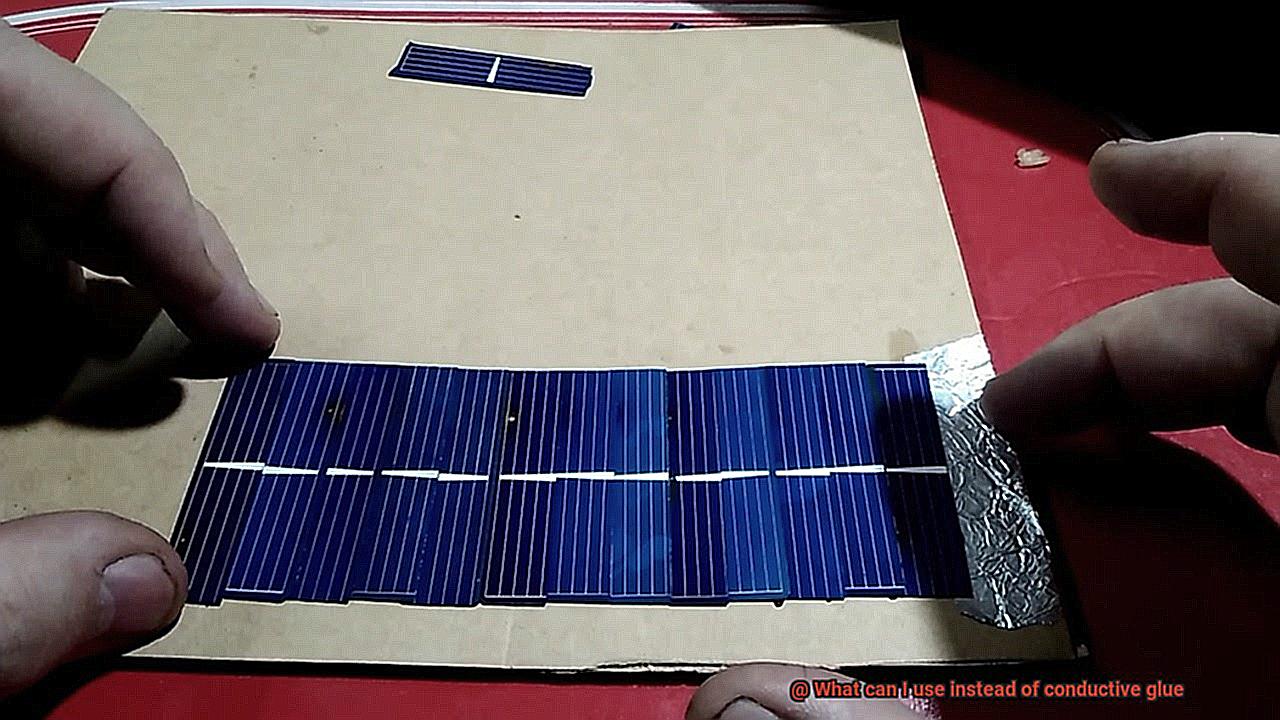
By expanding and filling the holes, rivets form a tight seal that resists shear forces and prevents disassembly.
Considerations When Choosing an Alternative to Conductive Glue
When it comes to bonding and connecting components in electronics and electrical applications, conductive glue has long been a popular choice. However, there are instances where an alternative to conductive glue becomes necessary. In this article, we will explore the crucial considerations to keep in mind when selecting an alternative to conductive glue. So, let’s dive right in.
Compatibility:
Consider the type of materials that need to be bonded. Conductive glue is commonly used for metals and conductive materials. Therefore, ensure that the alternative you choose is compatible with these materials and provides a strong bond.
Conductivity:
The level of conductivity required is another critical factor. Conductive glue is designed to offer a low resistance path for electrical current. When exploring alternatives, ensure they can achieve a similar level of conductivity that meets your application’s needs.
Temperature Resistance:
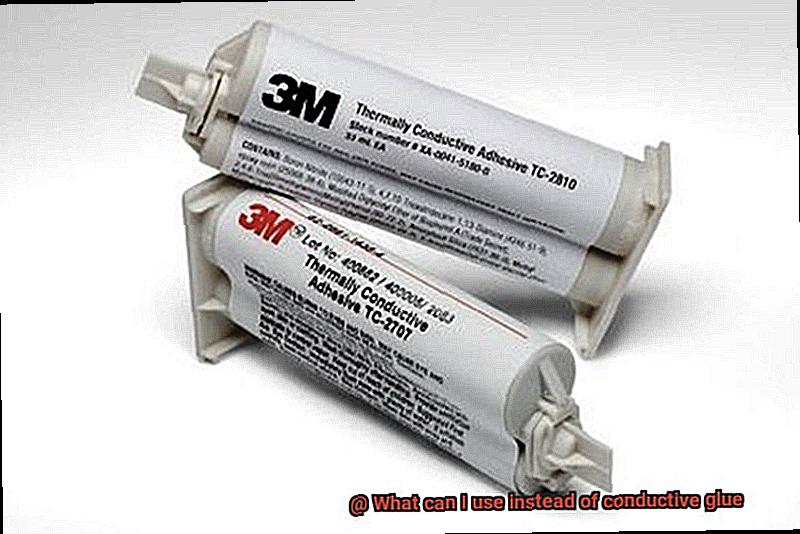
Conductive glue often encounters high temperatures during manufacturing or operation. Therefore, it is vital to select an alternative that can withstand these temperature conditions without compromising its conductivity or adhesion properties.
Environmental Considerations:
If your application will be exposed to moisture, chemicals, or other harsh conditions, opt for an alternative that offers sufficient protection and durability. Ensure the chosen alternative can withstand these environmental factors without degrading its performance.
Cost-Effectiveness:
While cost should never compromise quality, it is important to evaluate the cost-effectiveness of alternatives. Compare prices and performance to determine if the chosen alternative provides similar functionality at a more affordable price.
Ease of Use and Availability:
Consider the ease of use and availability of the alternative. Conductive glue is readily accessible and easy to apply for most applications. Ensure that the chosen alternative is equally accessible and doesn’t require specialized equipment or expertise for application.
Testing and Evaluation:
Always conduct thorough testing and evaluation before implementing any alternative in critical applications. This will ensure that the chosen alternative meets your specific requirements and performs as expected.
xqiJ7kjr1O4″ >
Conclusion
It’s frustrating when you run out of conductive glue and need an alternative solution.
Luckily, there are several options available that can serve as substitutes. Instead of relying solely on conductive glue, you can explore alternatives like conductive tape, soldering, or even using conductive ink.
These alternatives provide similar functionality and can be used in a variety of electronic projects. Conductive tape is a flexible option that allows for easy application and removal, making it ideal for temporary connections or prototyping.
Soldering, on the other hand, offers a more permanent solution by creating strong bonds between components. Lastly, conductive ink provides a unique approach by allowing you to draw or paint electrical connections directly onto surfaces.
This versatility makes it an excellent choice for creative projects or repairs where traditional methods may not be suitable.

